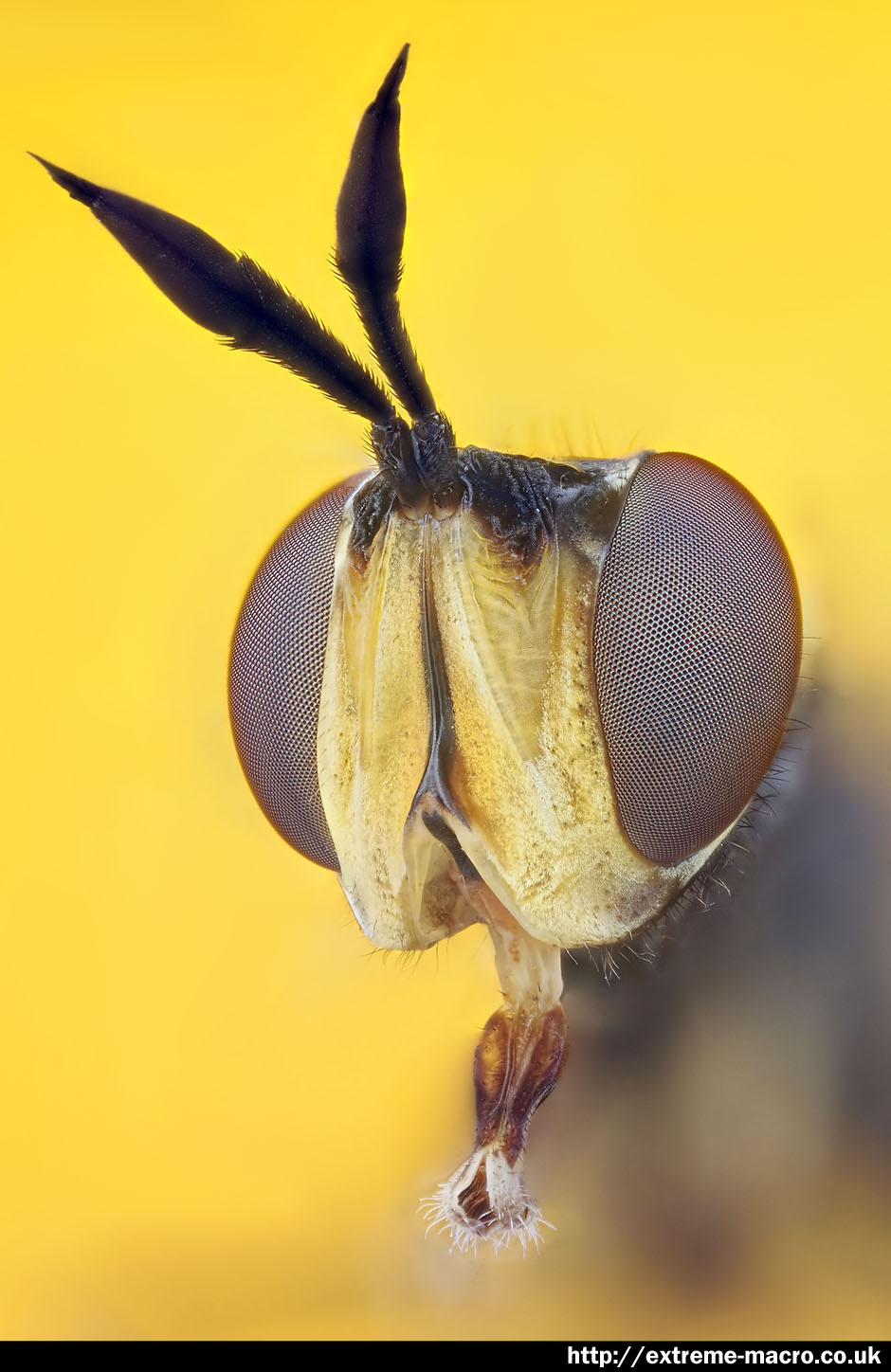Macro Thick-Headed Fly
by Johan J Ingles-Le Nobel
Last updated August 31, 2017
Extreme macro of a lovely little thick-headed fly. This image was the result of a new gadget that let me be a bit more varied. Before, the stage that I had was a cheap eBay lab lifter, and the mounting stage was a Watkins & Doncaster Insect Examination Stage. Between these it was relatively awkward to point insects at interesting directions into the camera, so it meant I was always pretty limited in terms of the views and angles I could use.
But, whilst some equipment was being repaired, I made two things: a special lifter and a rotation stage. Between these it meant that I could now make shots from more interesting angles, as it lets me do such things as 3/4 views like this. This is a pleasure because whilst the headon shot is always good for impact, surely not every shot should be a headon shot =).
Turns out that this is a thick-headed fly, not a hoverfly like I initially thought. Some hoverflies and thick-headed flies can look quite similar, but this face with the typical vertical grooves is typical for thick-headed flies and not seen in hoverflies.
Hover flies, also known as flower flies, syrphid flies & drone flies, belong to Family Syrphidae, and are usually mistaken for wasps with their yellow colouring. But on the contrary, they carry no sting and are actually generally of great benefit to agriculture, being predators of aphids and other damaging insect pests and their larvae. Adult hoverflies require nectar or honeydew and pollen to ensure reproduction and to power their activity, and the larvae require aphids for breakfast, lunch and dinner to grow up into adults. Larvae of some species can subsist and develop entirely on diets of pollen.
Hoverflies have only one pair of wings and, as their name suggests, hover. Most hoverflies in the UK are between 5-15 mm long, brightly coloured in yellow and black, and have huge compound eyes that nearly cover the head. One rule of thumb for identifying hover fly gender is, if the eyes meet at the top of the head, it's a male specimen.
Hoverflies really are the good guys in the garden. Their larvae are aphid-eating bots, but are so tiny that you really will need a magnifying glass to see them. Adults lay scattered eggs on leaves being fed upon by small, soft-bodied and to hoverflies, delicious insects such as aphids. Upon hatching, the hoverfly larvae completely scour the leaf surface for food and in parts of the world such as California they are introduced into fields for this very purpose. After a few weeks of feeding, the hoverfly larvae pupate into adults. Depending on the climate, several generations may occur. (Not a hoverfly - many thanks Sander!)
All in all this was an especially pleasing image for me personally because it was proof of the pudding for my universal stage. Without that I'd never have been able to pose this specimen in this manner.
Related Articles









